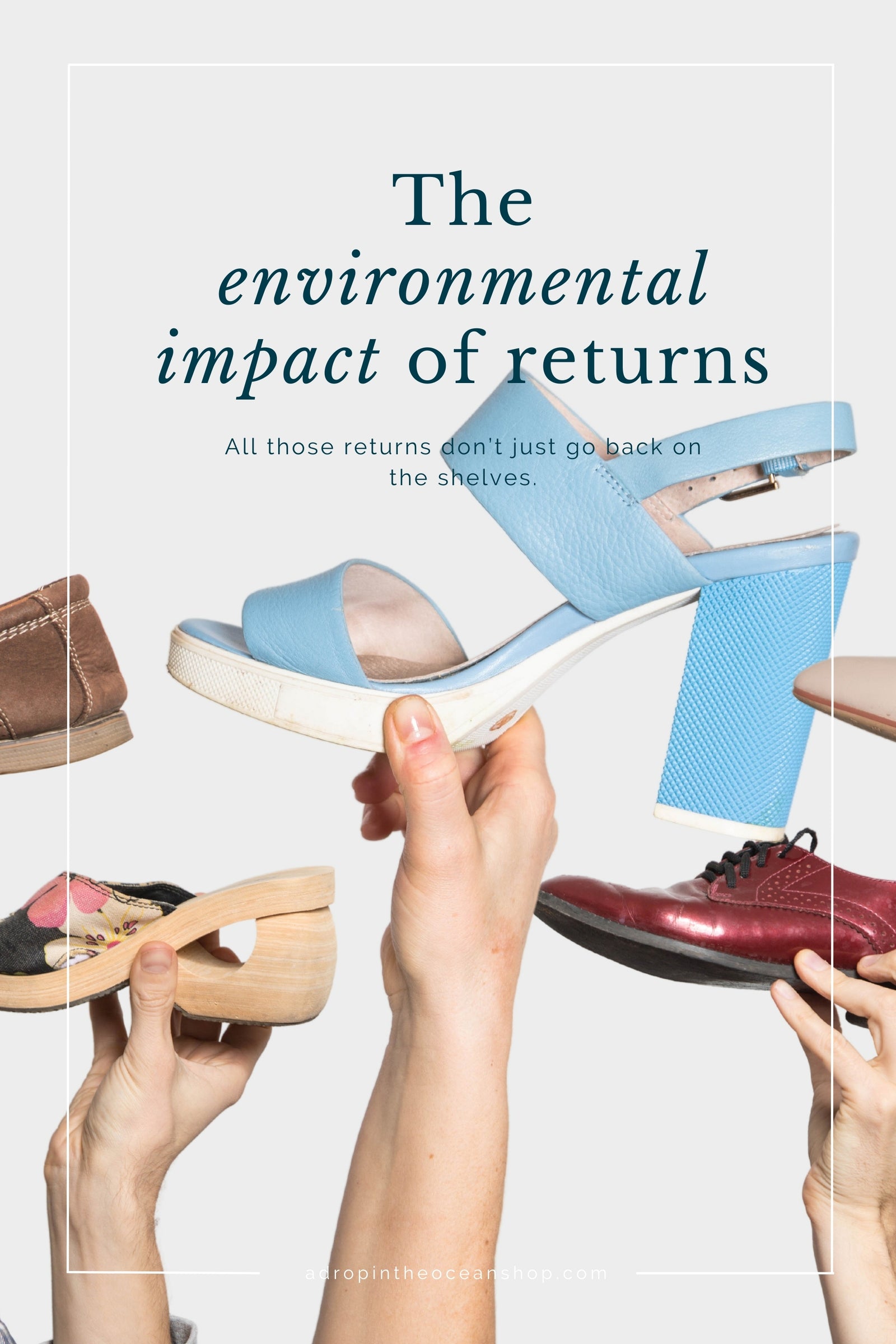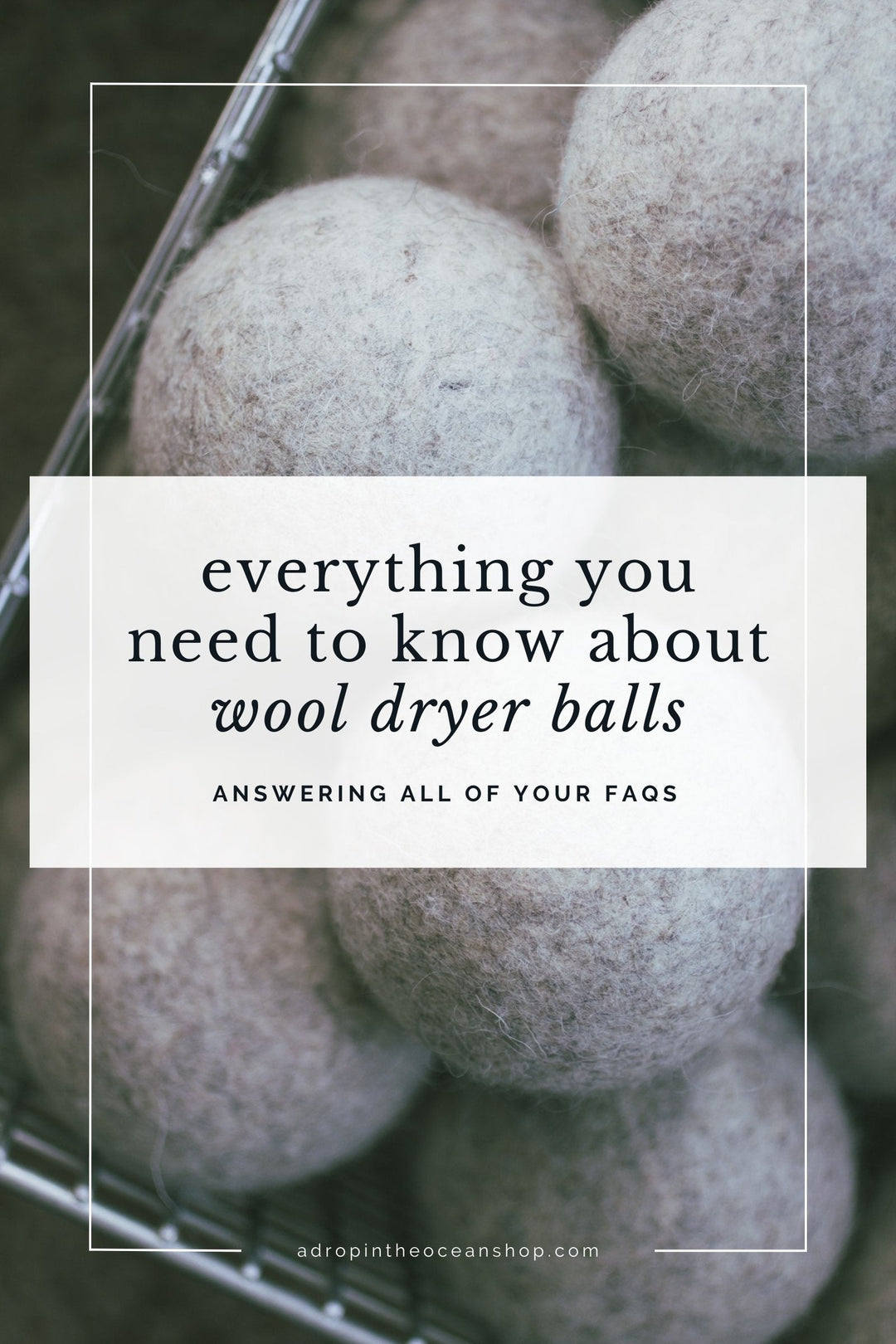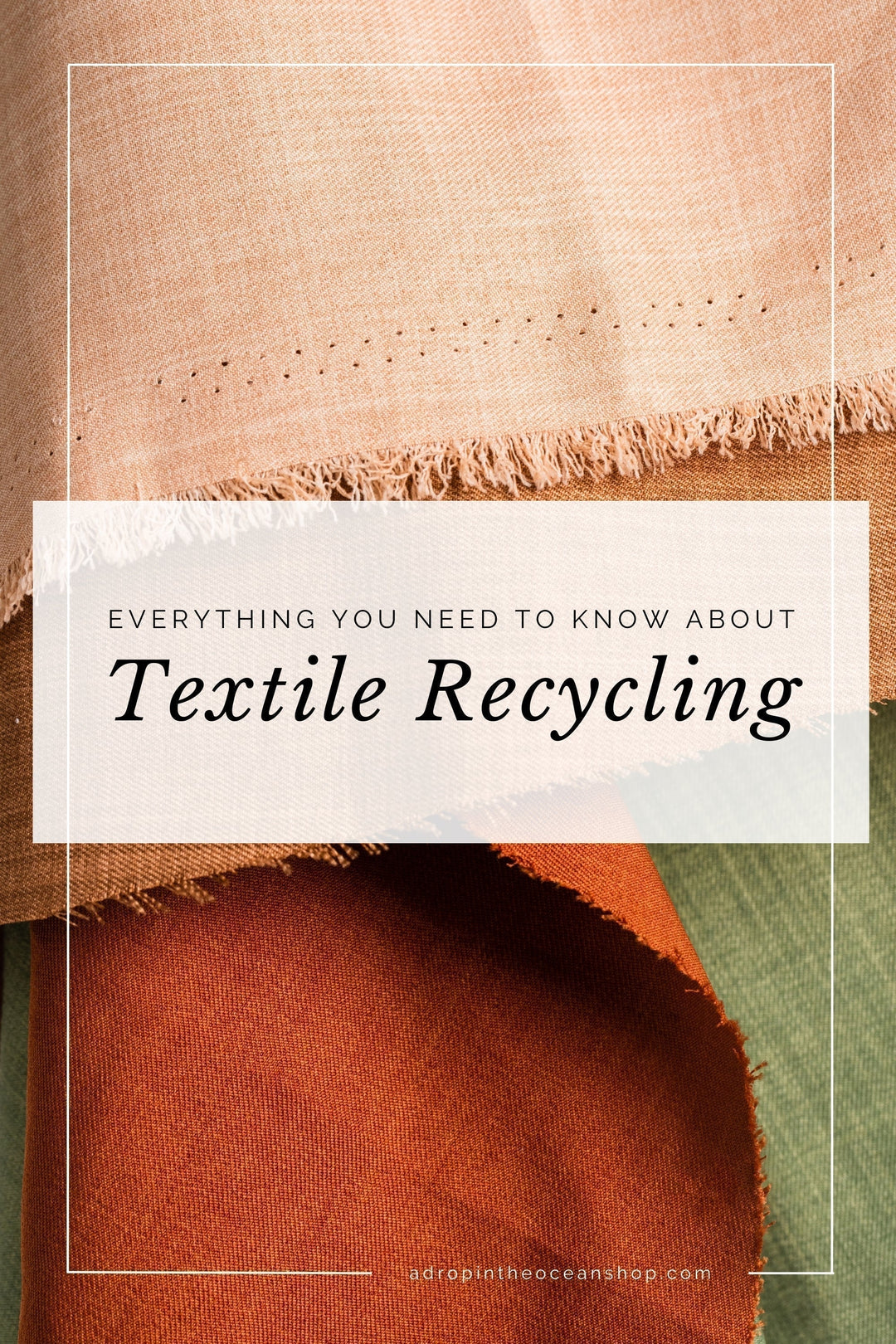What happens to all of the stuff we return?

This post first appeared in our weekly Make Waves Mondays email series on December 18, 2023.
So, friend, with the holidays upon us, I thought it might be about time to talk about something many of us are probably going to encounter at some point in the next month.
Returns.
Maybe you bought a sweater that doesn’t quite fit. Or maybe you were gifted a Stanley cup that’s not your favorite color. Maybe you gifted your nephew a book with a gift receipt tucked inside the front cover, juuuust in case it’s not his cup of tea.
It happens. Sometimes we buy things or receive things that just aren’t what we expected.
And when it does happen, our first reaction is typically to pop it in a box and send it back.
But what happens to all of those returns? Are they really going back on a shelf and sold as new? No harm done?

Yeahhhh…probably not.
Let’s dive into it.
Are customer returns really that big of a problem?
In short…yes. Especially at the holidays.
In 2019, the value of returned items in the United States alone totaled about $309 billion. Yes, that’s billion, with a B.
But just three years later, by 2022, that number has shot up to a whopping $816 billion 😳
And a solid chunk of those returns are just from the holiday season.
During the 2021 holiday season (November 14, 2021 through January 22, 2022), UPS alone processed 60 million returns - totalling $120 billion in value.
And it’s just kinda…expected.
According to a CNBC review on Amazon returns, 25% of Americans expect to return something during the holidays, and 41% of them expect they’ll return three or more items.
It’s become a part of our culture.
Buy something. Try it out. Decide we don’t want it. Return it. Repeat.
And if all of those returns were going straight back on the store shelves to be resold, great! No loss there.
But, as you probably guessed, that’s not the case.
What happens to all of your returns?
So there are a few different things that can happen when you return something.
While some items, like clothing, can sometimes be thoroughly inspected and - if in pristine condition - put back on shelves for resale, other items, like beauty products, are simply gonna be destroyed.
In most cases, it’s impossible to tell if an item has been opened and tampered with, and if it has that can be a safety hazard for the person who would buy the returned item.
(If you were curious, this is the reason we don’t accept returns at A Drop in the Ocean. If you purchase a bottle of shampoo from us and want to return it, there’s no way for us to know what you may have done with that shampoo bottle since it left our hands and we cannot resell it due to safety concerns. The unpackaged nature of our products make returns essentially impossible.)
If we look at Amazon as an example, Amazon says they don’t send anything to landfill, but in reality nearly all of their returns are incinerated instead.
Amazon charges its sellers for different ways to handle returns, and disposal costs about one third of the rest of the options, so Amazon retailers most often choose that option. It can cost a company a whole lot of money to choose something different.
As a whole, more than 25% of returns are ultimately discarded.

When you return an item to Amazon, it gets processed by a combination of real-life people and a standardized computer system, but ultimately, the computer system is what decides the fate of all those returned items.
And it’s probably not always making the right decisions.
One Amazon returns employee said that they processed a returned children’s book in perfect condition, but since the customer had claimed the book was “smashed upon arrival and bent” - even though it clearly wasn’t, and the employee tried to make that clear in the computer system - the system said the item had to be destroyed.
The employee had no way to override the system.
On the other hand, some returns are “liquidated,” which means they’re auctioned off in bulk at an immensely reduced cost.
One YouTube creator purchased a pallet of Amazon returns valued around $9,000 for just $575.
She said there were lots of items in the boxes that were literally trash (like a pair of leggings with a gaping hole in the crotch and a musty shower curtain), but the items that are usable she keeps or resells on Poshmark. She says some items are in near perfect condition, with tags still on them.
After going through all of the boxes of returns, apparently she only kept (either for herself or to resell) about $1,000 worth of stuff.
She “donated” $7,000 worth of stuff.
Which means that of that “$7,000 worth” of stuff, none of it was worth keeping to resell, which tells me they’re not in great condition and are probably gonna be thrown away anyway.
So…is it really that much better?
💭 I’d actually really love your thoughts on this one, friend. Do me a favor and comment below and let me know what you think of this! Is it better? Worse? About the same? Delaying the inevitable? Lemme know!
(I also touched on how most of our donations aren’t actually being donated in our deep dive on textile recycling a couple of months ago, and if you haven’t read or listened to that one yet, you’re gonna want to do that, too.)
So here’s the big deal:
In 2022 alone, a whopping 9.5 billion pounds of landfill waste was generated by returns, creating 24 million metric tons of CO2 emissions in the process.
To put that into perspective a bit, 24 million metrics tons of carbon dioxide is the equivalent of more than 5 million passenger vehicles driven for an entire year 🚗
Or 4.7 million homes’ energy use for a year 🏠
Or 6.4 coal-fired power plants operating for a year 💡
It would take nearly 400,000,000 trees growing for 10 years just to offset the emissions created by one year of returns.
🌳🌳🌳🌳🌳🌳🌳🌳🌳🌳🌳🌳🌳🌳🌳🌳🌳🌳🌳🌳🌳🌳🌳🌳🌳🌳🌳🌳🌳🌳🌳🌳🌳🌳🌳🌳🌳🌳🌳🌳🌳🌳🌳🌳🌳🌳🌳🌳🌳🌳🌳🌳🌳🌳🌳🌳🌳🌳🌳🌳🌳🌳🌳🌳🌳🌳🌳🌳🌳🌳🌳🌳🌳🌳🌳🌳🌳🌳🌳🌳🌳🌳🌳🌳🌳🌳🌳🌳🌳🌳🌳🌳🌳🌳🌳🌳🌳🌳🌳🌳🌳🌳🌳🌳🌳🌳🌳🌳🌳🌳🌳🌳🌳🌳🌳🌳🌳🌳🌳🌳🌳🌳🌳🌳🌳🌳🌳🌳🌳🌳🌳🌳🌳🌳🌳🌳🌳🌳🌳🌳🌳🌳🌳🌳🌳🌳🌳🌳🌳🌳🌳🌳🌳🌳🌳🌳🌳🌳🌳🌳🌳🌳🌳🌳🌳🌳🌳🌳🌳🌳🌳🌳🌳🌳🌳🌳🌳🌳🌳🌳🌳🌳🌳🌳🌳🌳🌳🌳🌳🌳🌳🌳🌳🌳🌳🌳🌳🌳🌳🌳🌳🌳🌳🌳🌳🌳🌳🌳🌳🌳🌳🌳🌳🌳🌳🌳🌳🌳🌳🌳🌳🌳🌳🌳🌳🌳🌳🌳🌳🌳🌳🌳🌳🌳🌳🌳🌳🌳🌳🌳🌳🌳🌳🌳🌳🌳🌳🌳🌳🌳🌳🌳🌳🌳🌳🌳🌳🌳🌳🌳🌳🌳🌳🌳🌳🌳🌳🌳🌳🌳🌳🌳🌳🌳🌳🌳🌳🌳🌳🌳🌳🌳🌳🌳🌳🌳🌳🌳🌳🌳🌳🌳🌳🌳🌳🌳🌳🌳🌳🌳🌳🌳🌳🌳🌳🌳🌳🌳🌳🌳🌳🌳🌳🌳🌳🌳🌳🌳🌳🌳🌳🌳🌳🌳🌳🌳🌳🌳🌳🌳🌳🌳🌳🌳🌳🌳🌳🌳🌳🌳🌳🌳🌳🌳🌳🌳🌳🌳🌳🌳🌳🌳🌳🌳🌳🌳🌳🌳🌳🌳🌳🌳🌳🌳🌳🌳🌳🌳🌳🌳🌳🌳🌳🌳🌳🌳🌳🌳🌳🌳🌳🌳🌳🌳🌳🌳🌳🌳🌳🌳🌳🌳🌳🌳🌳🌳🌳🌳🌳🌳
👆 That’s a whole heck of a lot of trees. (Take that emoji forest, multiply it by a million, and grow it for 10 years without losing any of them. And then you have offset the emissions created from one year of customer returns.)
What can you do instead of returning something?
First and foremost - before making any purchases, really think about whether or not you need that item.
Ask yourself…
- How often will I use or wear this item?
- Do I already have something like this?
- Can I borrow it?
- How long will it last?
And if you’re buying a gift for someone else, buy with intention. Ask these same questions as if you were the recipient.
I know that our society typically tells us that we need to give physical gifts for the holidays, but there are also so many other ways we can show our love! Check out our ultimate sustainable gift guide for a ton of experience gifts and acts of service to give instead of something physical.
But if you do end up with something you don’t need or want…
Regift it
Personally, I think we really need to de-stigmatize regifting. If you don’t love that sweater or Stanley cup, do you know someone who would? Could you offer it to your Buy Nothing Group?
There are plenty of ways to regift something - especially if it’s still like new!
Get those unwanted items into the hands of someone who will love them.

Resell it
If it’s something that has resale value, try putting it up on Poshmark or Facebook Marketplace.
Even if you don’t get the full cost of the item back, you can at least get a good portion back, and know that the item won’t be heading straight to a landfill like it probably would if you just returned it.
Donate it
I only recommend this as a last resort. Donation centers are notoriously overrun, and sometimes difficult to know if your item is actually going to be resold.
(Although, if it’s a brand new item in returnable condition, it’s probably got a good chance of making it onto the sales floor... 🤷♀️)
Or, if there’s a local organization that has a wish list and your item is on that wish list, I’d absolutely recommend that instead. Because then you know your item is gonna be used and cherished by whoever receives it.
So in summary…
As much as I wish I could say that all of our society’s returns are going back on shelves and nothing’s going to waste, that’s simply not the reality of what’s happening.
And all of those returns are causing wasted time, energy, and money, and ultimately contributing to some artificially high pricing, to make up for the lost revenue caused by returns.
❌ Now don’t get it twisted - this isn’t just a consumer issue. ❌
Yes, there’s a lot we can do as consumers to mitigate the problem, but we also need to demand better transparency with online product listings and consistent closing sizing standards so we really know what we’re getting before we buy it.
It’s a “yes, and…” situation. We need top-down and bottom-up changes.
So as always, do what you can, when you can, where you can 💙
Happy holidays, friend ☃️
Related:
6 Ways to Reduce the Carbon Footprint of Your Shopping Habits
Did France Just Ban Fast Fashion?
How to [finally] break up with Amazon
Is textile recycling greenwashing or an actual waste solution? Here's everything you need to know.
Why Sustainable Fashion Matters + What We Can Do About It









Thank you for this article. I believe there is an obsessive mindset prone to returning items purchased. One consumer I know returns things after years of use due to the “lifetime” guarantee placed on some items. It is a advertising problem and a consumer deception problem. Appreciate all of your suggestions here to eliminate the waste of returns. Plan to heed several of them.
I work at The UPS Store and where I live we are one of the main drop off locations for Amazon returns. It blows my mind that Jeff Bezos is so stinking rich he doesn’t care what happens to the returns because he’s still making multi-millions/day.
It’s frustrating because Amazon returns is my job security. It’s literally 98% of our business. 🫤
This really opened my eyes on returns! This alone will help me buy less from the start. So many times I’d buy an item because it was the last one and I didn’t want to miss out. Then I’d get home, give it some thought and realized I really didn’t need/want it. And back to the store it goes. I guess I won’t be doing that anymore. Good news- we own a small business ourselves and are able to put all our returns back on the shelves! It helps that we sell new and used sports equipment at our shop so the return is easier to get back out without worry of contamination etc.
Leave a comment